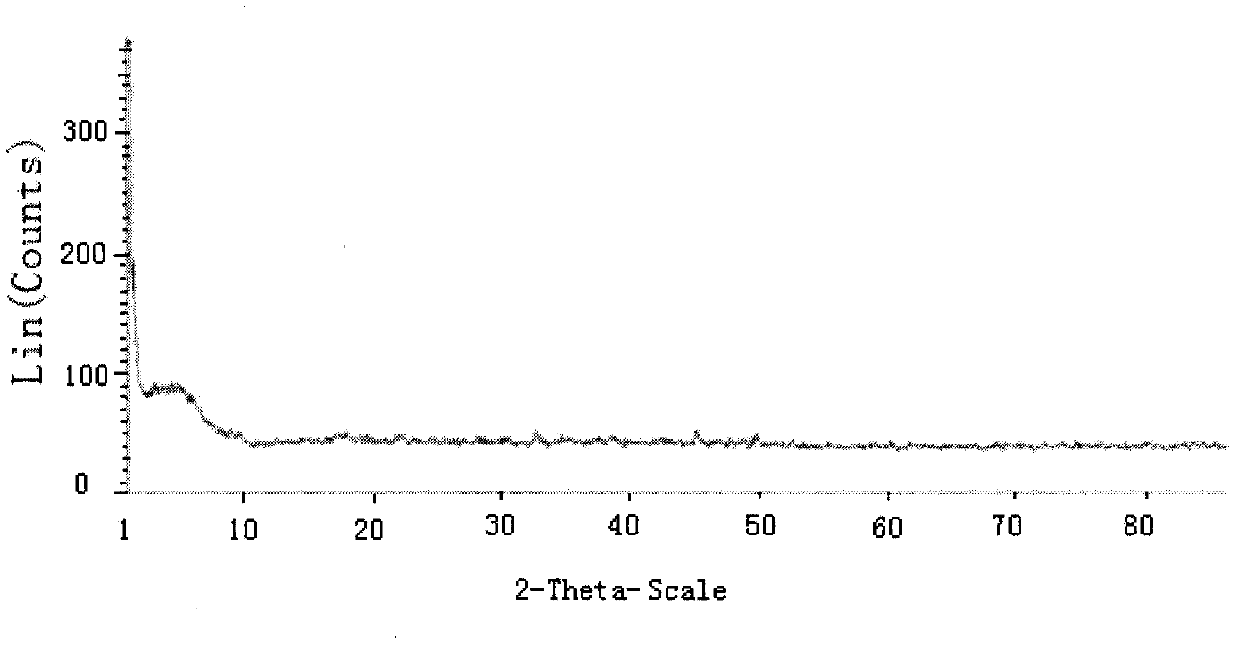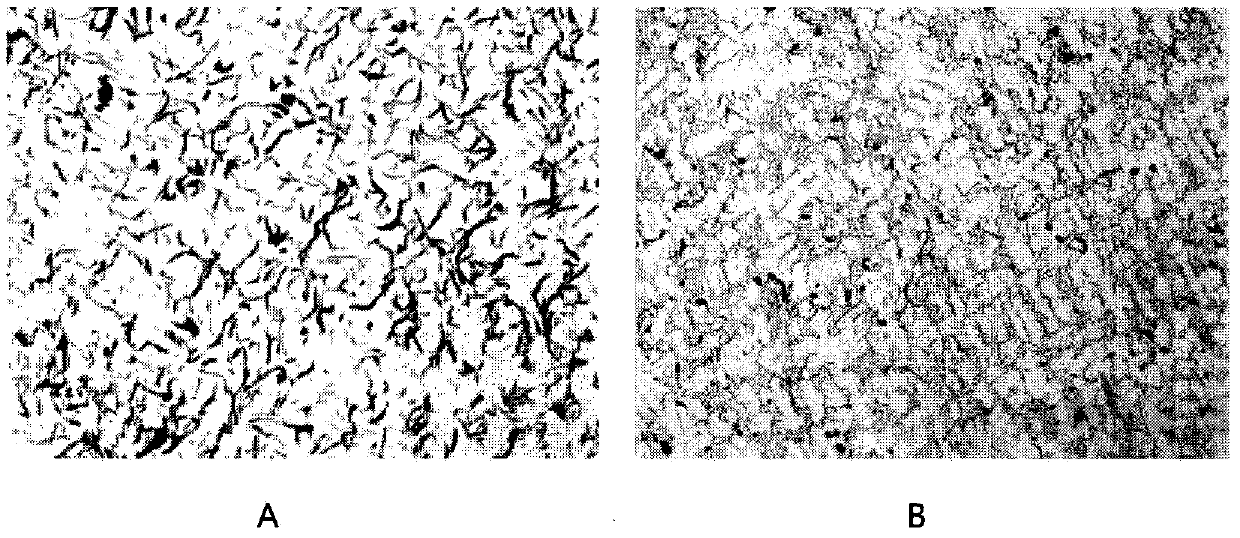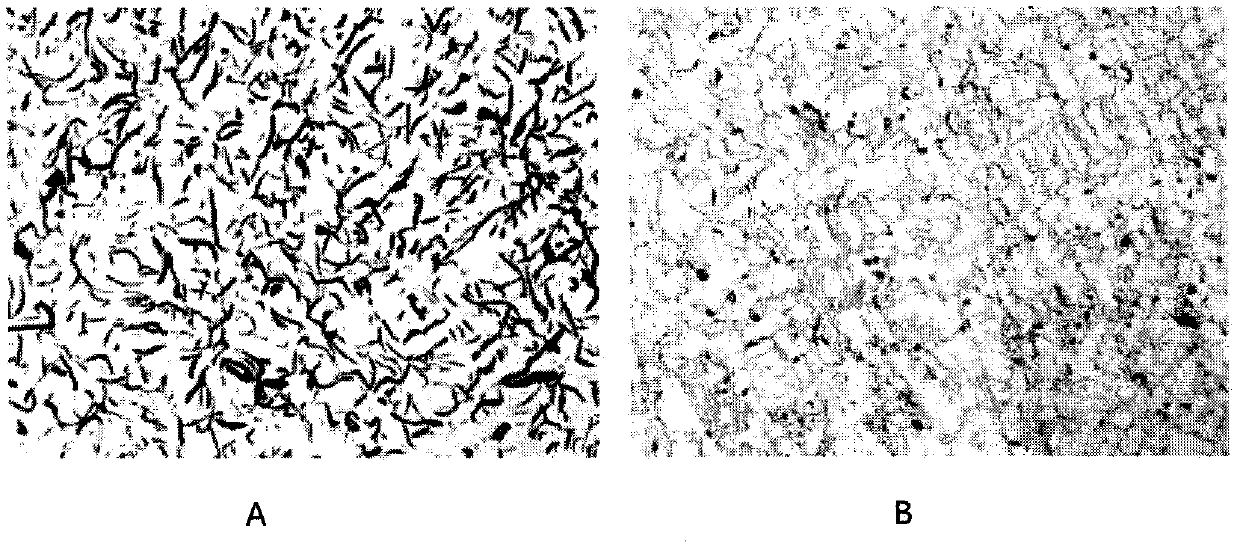Amorphous inoculant for gray cast iron and its preparation method and use method
An inoculant and gray cast iron technology, which is applied in the field of cast iron alloys, can solve the problems of incomplete modification, increased material cost, poor casting strength improvement effect, etc., and achieve the goal of reducing the solidification temperature range, reducing the interface energy, and increasing the nucleation rate Effect
- Summary
- Abstract
- Description
- Claims
- Application Information
AI Technical Summary
Problems solved by technology
Method used
Image
Examples
Embodiment 1
[0038] The composition of each element weight percentage of type 1 amorphous inoculant is:
[0039] 72 Si, 2.0 Al, 2.0 Mn, 4.0 Cr, 0.4 Cu, the balance being Fe; or: 74 Si, 1.5 Al, 1.0 Mn, 2.0 Cr, and the balance being Fe; or It is: 76 Si, 0.8 Al, 0.1 Cu, and the balance is Fe.
[0040] The preparation method of type 1 amorphous inoculant:
[0041] Put the type 1 amorphous inoculant alloy with a particle size of 2-8mm into the water-cooled copper crucible of the vacuum quenching furnace, adjust the position of the electrode so that the distance between it and the raw material alloy particles in the crucible is 0.5-1.5mm, close Furnace door, material inlet and outlet, and air release valve, after vacuuming to 3-4×10-3Pa, fill with protective gas argon, and the pressure of the vacuum quenching furnace can be kept within the range of -0.04~-0.06Pa. After the arc is started, the arc current is adjusted to gradually increase to 650-800A, and the raw material alloy in the crucible ...
Embodiment 2
[0046] The composition of each element weight percentage of type 2 amorphous inoculant is:
[0047] 45% Si, 2.0% Al, 2.0% Mn, 0.4% Cu, the balance is Fe; or: 47% Si, 1.5% Al, 1.0% Mn, the balance is Fe; or: 50% Si, 0.8% Al, 0.1 of Cu, and the balance of Fe.
[0048] The preparation method and usage method of Type 2 amorphous inoculant are the same as in Example 1.
[0049] image 3 middle, image 3 a is the graphite form of the sample without adding the inoculant of Example 2, the average length of graphite is 146.73 μm, image 3 b is the graphite form of the sample added with Type 2 amorphous inoculant (the second composition of Example 2), and the average length of graphite is 106.34 μm.
Embodiment 3
[0051] The composition of each element weight percentage of Type 3 amorphous inoculant is:
[0052] 60% Si, 3.0% Al, 7.0% Zr, 2.0% Mn, 0.4% Cu, and the balance is Fe; or: 65% Si, 2.0% Al, 6.0% Zr, 1.0% Mn, and the balance is Fe; or It is: 70 Si, 0.8 Al, 5.0 Zr, 0.1 Cu, and the balance is Fe.
[0053] The preparation method and usage method of Type 3 amorphous inoculant are the same as in Example 1.
[0054] Figure 4 middle, Figure 4 a is the graphite form of the sample without adding the inoculant of Example 3, the average length of graphite is 138.69 μm, Figure 4 b is the graphite form of the sample added with Type 3 amorphous inoculant (the third composition in Example 3), and the average length of graphite is 98.66 μm.
PUM
| Property | Measurement | Unit |
|---|---|---|
| particle size | aaaaa | aaaaa |
| surface temperature | aaaaa | aaaaa |
| thickness | aaaaa | aaaaa |
Abstract
Description
Claims
Application Information
 Login to View More
Login to View More - Generate Ideas
- Intellectual Property
- Life Sciences
- Materials
- Tech Scout
- Unparalleled Data Quality
- Higher Quality Content
- 60% Fewer Hallucinations
Browse by: Latest US Patents, China's latest patents, Technical Efficacy Thesaurus, Application Domain, Technology Topic, Popular Technical Reports.
© 2025 PatSnap. All rights reserved.Legal|Privacy policy|Modern Slavery Act Transparency Statement|Sitemap|About US| Contact US: help@patsnap.com



